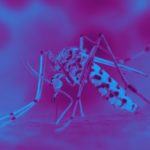Lien vers Pubmed [PMID] – 18632583
Proc. Natl. Acad. Sci. U.S.A. 2008 Jul;105(29):10067-72
Recently, the extent of copy number variation (CNV) throughout the genome has been shown to be far greater than previously thought. Further, it has been demonstrated that specific copy number variable regions (CNVRs) are associated with particular diseases, suggesting that these genetic variations may have an important biological role. Hence, calling CNVRs and subsequently classifying samples as “losses” or “gains” is of great interest. A number of papers have been published containing classifications of CNVs, and here we show how the presence of pedigree information can be used for assessing the performance of those classification methods. In this article, by examining CNV classifications made in the HapMap samples, we show that estimates of the number of false-positive classifications per individual made by current approaches can be determined. Moreover, commonplace technologies for determining the locations of CNVRs aggregate information across the maternal and paternal chromosomes at the locus of interest. Here, we show that copy number variation on each chromosome can be inferred and, in particular, we discuss the existence of a class of CNVs that are inevitably misclassified and give an estimate of their prevalence. Although our focus is not on the development of calling algorithms per se, we describe and provide an example of how our model might be incorporated into the initial classification procedure to produce more robust results. Finally, we discuss how this methodology might be applied to future studies to obtain better estimates of the extent of CNV across the genome.

